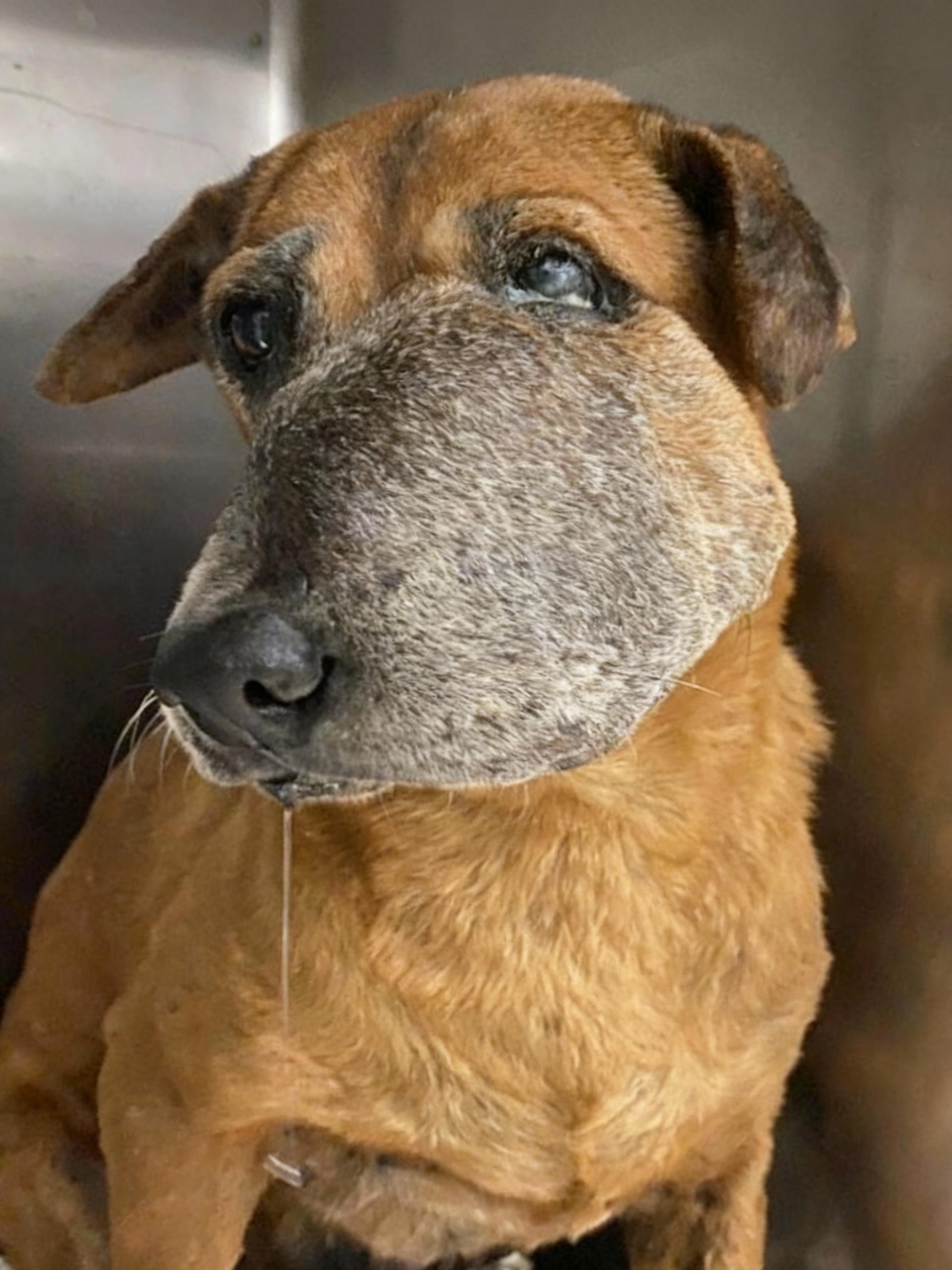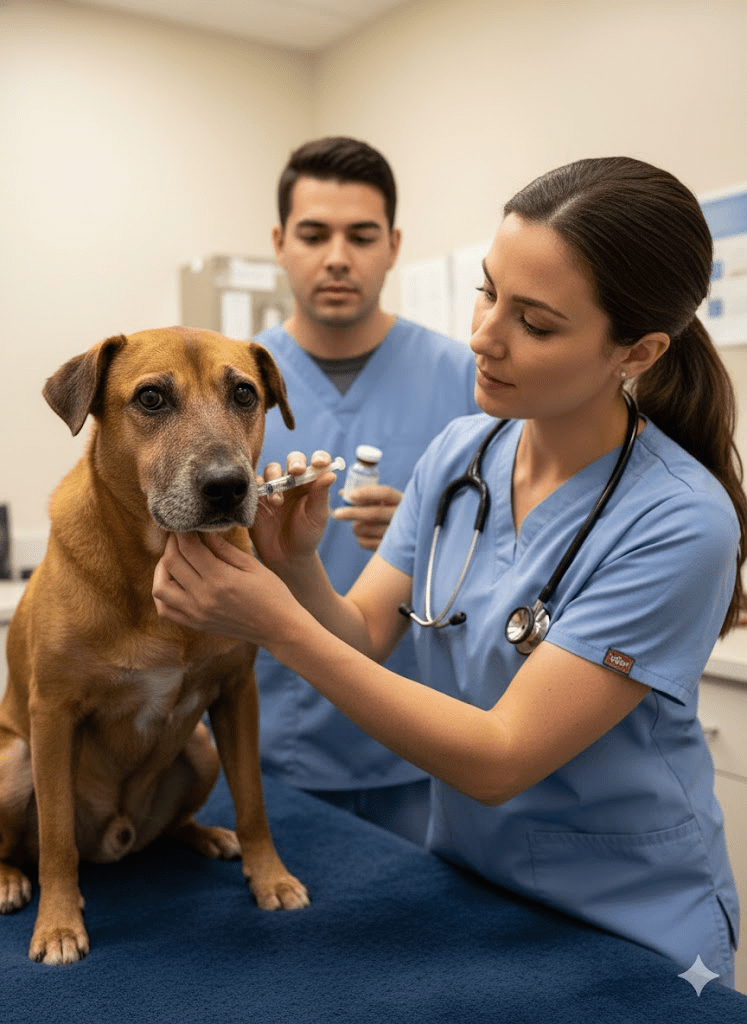NXT Recognizing and Responding to Allergic Reactions in Dogs
The image before us captures a moment of distress that many pet owners might unfortunately encounter: a dog exhibiting signs of a significant allergic reaction. The swelling around the muzzle and eyes, as seen in the photograph, is a classic indicator of an acute allergic response, often triggered by insect stings or bites, certain foods, medications, or environmental allergens. This particular presentation, characterized by facial edema, can quickly progress and, if severe enough, compromise the animal’s airway, transforming a uncomfortable situation into a life-threatening emergency. Understanding the underlying mechanisms of allergic reactions in canines, recognizing the varied symptoms they can present, and knowing how to respond promptly and effectively are crucial skills for any responsible dog owner. This article aims to demystify canine allergies, provide practical advice on initial assessment and intervention, and emphasize the importance of veterinary consultation to ensure the best possible outcome for our beloved companions. By arming ourselves with knowledge, we can be better prepared to safeguard our dogs’ health and well-being when faced with such unexpected challenges.

Understanding Canine Allergies: A Biological Overview
Allergies in dogs, much like in humans, are essentially an overreaction of the immune system to substances that are typically harmless. When an allergen enters the dog’s body, the immune system mistakenly identifies it as a threat and mounts a defensive response. This involves the release of various chemicals, most notably histamine, from mast cells. Histamine is responsible for many of the classic allergic symptoms, including itching, swelling, redness, and inflammation. The severity and manifestation of these symptoms depend on the type of allergen, the dog’s individual sensitivity, and the route of exposure. For instance, an inhaled allergen like pollen might lead to respiratory issues or skin irritation, while an ingested allergen could cause gastrointestinal upset or widespread hives. A direct contact allergen, such as certain plants or chemicals, might result in localized skin reactions. The dog in the initial image, with its pronounced facial swelling, is likely experiencing an acute hypersensitivity reaction, where the immune system’s response is swift and intense, often due to an insect bite or sting directly to the face. This rapid onset of symptoms underscores the need for immediate recognition and appropriate action. Understanding this fundamental biological process helps pet owners appreciate why different allergens trigger varied reactions and why some reactions are more urgent than others.

Common Allergens and Their Triggers
Dogs can be allergic to a wide array of substances, categorizing them into several main groups. Environmental allergens are very common and include pollen from trees, grasses, and weeds, as well as dust mites, mold spores, and dander from other animals. These often cause seasonal allergies, manifesting as itchy skin (atopic dermatitis), paw licking, ear infections, or respiratory symptoms like sneezing and watery eyes. Food allergies, on the other hand, occur when a dog’s immune system reacts negatively to certain ingredients, most commonly proteins like beef, chicken, dairy, or wheat. Symptoms typically include gastrointestinal issues such as vomiting, diarrhea, and excessive gas, but can also present as chronic skin problems or ear infections. Differentiating food allergies from food sensitivities (which don’t involve an immune response) requires careful dietary trials. Insect allergies, particularly to flea saliva, are also widespread, leading to intense itching, hair loss, and skin infections, especially around the base of the tail. The severe facial swelling depicted in the initial image is highly suggestive of an acute reaction to an insect sting or bite, such as from a bee, wasp, spider, or even certain ants. Less commonly, dogs can experience contact allergies to substances like certain plants, cleaning products, or bedding materials, resulting in localized skin irritation where the allergen touched the skin. Lastly, medication allergies can occur, though they are less frequent, causing reactions ranging from mild rashes to severe systemic responses. Identifying the specific allergen is often challenging but crucial for effective management and prevention, typically requiring a combination of veterinary assessment, diagnostic tests, and careful observation by the owner.

Recognizing the Signs: Beyond Facial Swelling
While the prominent facial swelling seen in the initial image is a striking and undeniable sign of an allergic reaction, it is important for pet owners to recognize the broader spectrum of symptoms that allergies can present. The signs can vary significantly in severity and location, depending on the allergen and the individual dog’s sensitivity. Beyond angioedema (swelling, particularly of the face, eyelids, and lips), other common dermatological signs include intense itching (pruritus), which may manifest as excessive scratching, licking, or chewing at the skin, paws, and base of the tail. This constant irritation can lead to redness, inflammation, hives (urticaria), hot spots (acute moist dermatitis), and even hair loss or secondary skin infections if left untreated. Gastrointestinal symptoms can also be indicative of allergies, especially food allergies, presenting as vomiting, diarrhea, flatulence, or chronic soft stools. Respiratory signs, though less common in dogs compared to humans, can include sneezing, coughing, watery eyes, and nasal discharge, particularly with inhaled allergens. In severe, systemic allergic reactions, known as anaphylaxis, symptoms can escalate rapidly to include difficulty breathing, weakness, pale gums, cold extremities, and collapse due to a dramatic drop in blood pressure. Anaphylaxis is a life-threatening emergency requiring immediate veterinary intervention. Therefore, while a swollen face like the one pictured demands urgent attention, pet owners should be vigilant for any unusual or persistent changes in their dog’s behavior or physical condition, as these could all be subtle indicators of an underlying allergic response.

Immediate Actions and When to Seek Veterinary Care
When confronted with a dog showing signs of an allergic reaction, especially severe symptoms like the facial swelling in the provided image, prompt action is critical. For mild, localized reactions such as a few hives or minor itching, you might initially try to soothe the area with a cool compress. If you suspect an insect sting and can safely locate it, gently removing the stinger (if visible) can prevent further venom release, though this is often difficult. However, any sign of swelling, especially around the face, eyes, or neck, warrants immediate veterinary attention. This is because swelling in these areas can rapidly progress and obstruct the airway, leading to breathing difficulties. Furthermore, if your dog exhibits any signs of a systemic reaction, such as difficulty breathing, weakness, pale gums, vomiting, diarrhea, or collapse, this constitutes a medical emergency, and you should transport your dog to the nearest emergency veterinary clinic without delay. Even if the symptoms appear mild at first, it’s always safer to err on the side of caution and consult with a veterinarian, as allergic reactions can sometimes worsen unexpectedly. Never attempt to administer human medications, such as antihistamines, without specific guidance from a vet, as dosages differ significantly, and some ingredients can be toxic to dogs. Your veterinarian will assess the severity of the reaction, determine the most likely cause, and administer appropriate treatments, which may include injectable antihistamines, corticosteroids, or epinephrine in severe cases, to quickly reduce symptoms and prevent further complications.





